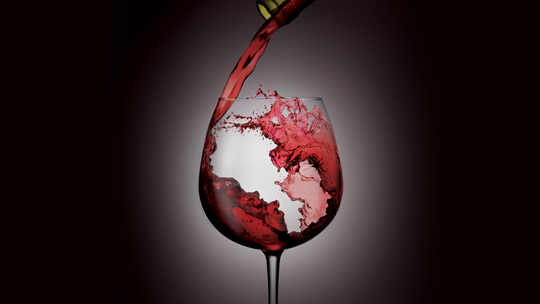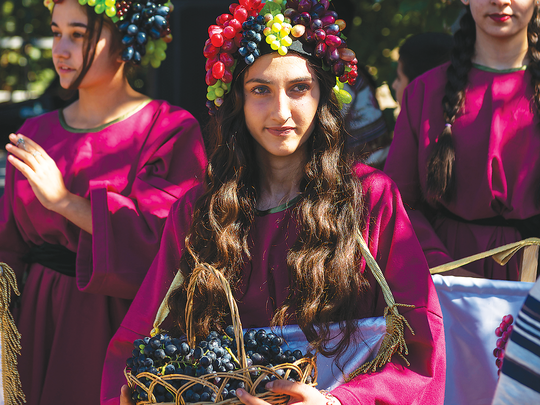Ask any wine enthusiast to name the countries that produce the world’s most sought-after luxury labels and, chances are, you will hear the familiar shortlist—Italy, France, Spain and the United States. However, ask any of the over 50 registered winemakers who have planted a stake in the viticulture (cultivation of grapevines) industry in Armenia and Artsakh, and they will tell you that the list will soon be out of date.
Ever since 2007, when the Areni-1 cave complex was discovered by a team of Armenian and Irish archaeologists in the Vayots Dzor province of Armenia—bearing evidence that wine was made there as early as 6,100 years ago—the rush is on to reinstate Armenia to its original glory as a winemaker’s paradise.
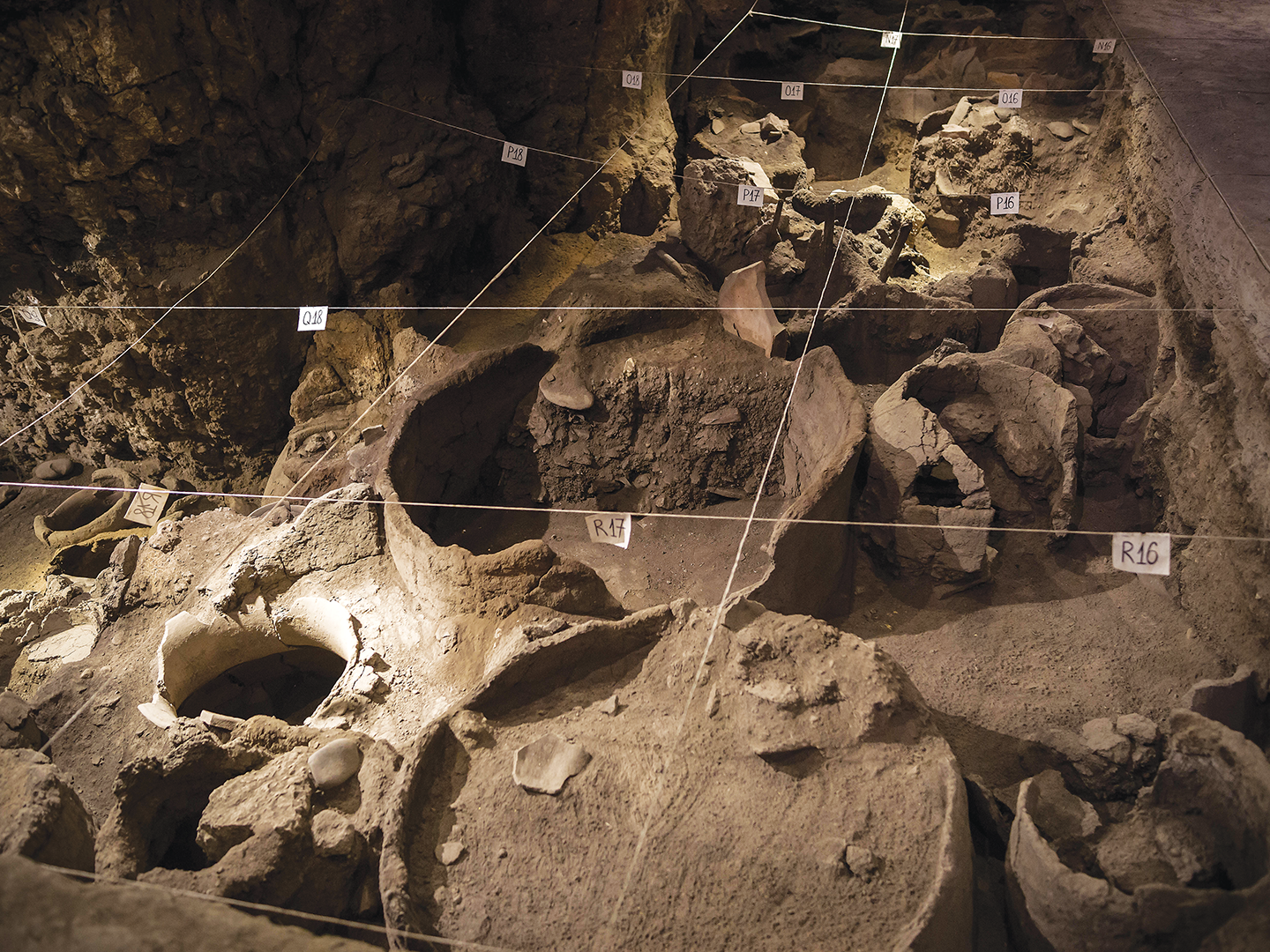
After all, according to Genesis, it was Noah who planted the first vineyard in Armenia in the foothills of Mt. Ararat. There are also historical accounts that in the 5th century BC, Armenians transported wine down the Tigris-Euphrates rivers. Grapevines often adorn the pages of ancient Armenian illuminated manuscripts, and carvings of them appear on churches and khachkars. The Blessing of the Grapes, an annual religious ceremony that relates to the Feast of the Assumption of Virgin Mary, is derived from a pagan custom of sacrificing the first grape harvest to Goddess Anahit.
Historical mystique notwithstanding, the overwhelming scientific and visual evidence points to Armenia as not only the birthplace of viticulture but also the future of a robust premium wine industry on a global scale, thanks to a type of soil and climate that yield a wide variety of rare and superior indigenous grapes.
Ask the Experts
At a press conference held in Armenia in 2013, Renée Payan, the now former dean of the oldest wine institute in the world, the Université du Vin—Suze la Rousse in France, aptly noted, “If France is one of the biggest wine producers today, then Armenia is the cradle of winemaking, and it should restore the traditions, re-establish its image and take its rightful place on the global viniculture (winemaking) map.”
If France is one of the biggest wine producers today, then Armenia is the cradle of winemaking, and it should restore the traditions, re-establish its image and take its rightful place on the global viniculture map.
Renowned Californian winemaker Paul Hobbs, who is a partner in Armenia’s Yacoubian-Hobbs Winery, had this to say upon taking the first sip of the Areni wine that he and his partners Viken and Vahe Yacoubian created in collaboration with Vahe Keushguerian of WineWorks. “The Areni red was quite intense and perfumed, very spicy and surprisingly elegant—it had a lot of the characteristics of very good wine. The even bigger surprise, however, was how good the white wines were. They really speak of the land where they are grown and that was very exciting. At that moment, we knew we could pursue this commercially.”
When they brought the wines to the United States, the reaction was highly favorable. “We sold out very quickly,” reported Hobbs, “and were even able to place the wine in many top restaurants around the country. To achieve that phenomenal success is very gratifying. There have only been a few times in my entire career where I experienced that kind of feeling.”

Making Up for Lost Time
Ironically, until winning its independence, Armenia had lost its historical identification with wine. As a Soviet republic, it focused on producing vodka and cognac, continuing the practice even after the collapse of the USSR. The few Armenian wines available at the time were semi-sweet or sweet and used only when vodka was considered inappropriate, such as for wedding ceremonies in churches.
When Armenia became a sovereign state in 1991, many diaspora Armenians, visiting for the first time, were optimistic about the future of their ancestral homeland. Feeling a connection to the land, they were compelled to contribute to its rebirth through economic development. A few visionary pioneers from the West, some being of Armenian descent, brought their expertise from wine countries like Argentina, Italy, and the United States. They were determined to turn professional winemaking in Armenia into a serious and sustainable enterprise. Planting vineyards and establishing wineries, these risk-takers are the forerunners of more than 150 labels of Armenian wine today, with globally recognized names like Karas, Zorah, Van Ardi, Golden Grape ArmAs, Takri, Kataro, and others.

Armenia’s Wine Comeback
Without the love for the land and ambitions to put Armenia on the world wine map, these early winemakers could not have achieved the success they are experiencing today. With no modern winemaking facilities, equipment or expertise, they mostly had to start from scratch, often inviting foreign experts to help them build their facilities and train staff.
Karas Wines brought winemakers and other specialists from Argentina and France, among them Michel Rolland, an internationally recognized winemaker. ArmAs Estate, similarly, had 35 Italians living in Armenia during the two-year construction period and dozens continued to visit for specialized works throughout the years.
Located in many remote regions of Armenia and Artsakh, the wineries created essential jobs for locals, and, in turn, rely heavily on them as a ready workforce. Many workers leave their villages for better opportunities in the cities or the capital, making it difficult for wineries to find qualified employees for the vineyards and wineries. Karas Wines employs about 500 people around the year. “We treat our employees very special,” Juliana Del Aguila, CEO of Karas Wines explains. “We provide homemade lunch every day, made with the organic produce that we grow on our farms. This is not just about making wine, it is about creating a sense of community.”
With the success of Karas, which quickly became the most popular Armenian wine in both Armenia and the Diaspora, the perception that Armenia could not produce quality wines was debunked. The momentum continued, when in 2012, the label Zorah Karasi appeared on Bloomberg’s top 10 list of world wines. In her piece entitled “Top 10 Wines of 2012 from Burgundy to Armenia to Sonoma,” Elin McCoy mentioned the 2010 Zorah Karasi, saying, “I was wowed by my first-ever taste of an Armenian wine, this stylish red made from Areni noir grapes and aged in traditional clay amphora. I also savored the thrill of drinking history.” Armenian wines continue to receive medals and awards at various competitions and tastings.

A Tourism Tipping Point
With the recognition and success of the industry, wine tourism has naturally gained traction in Armenia. The first wine bar, In Vino, opened in Yerevan in 2012 followed by several others, thereby evolving the society into a wine culture. More restaurants are now offering an elaborate wine list featuring both domestic and international wines. In 2012, In Vino sold about 600 different types of wine, of which about 20 were Armenian. Today, it has over 850 types of wines and more than 100 Armenian wines from about 27 wineries. Mariam Saghatelyan of In Vino observed, “New wines are emerging very fast; that is why we have a group of winemakers and wine enthusiasts who must try all of the new wines and decide which are well-made, balanced, and adhere to their price-to-quality ratio in order to be presented on our shelves. We wouldn’t sell anything we don’t drink ourselves.”
Wine tasting events are popular at In Vino and all major wineries have their own tasting rooms and organize tours and events. Wine festivals have become popular and well-attended events that take place in Yerevan, the Vayots Dzor region where the archeological site of the first winery was found, as well as in Stepanakert in Artsakh. Armenia also started to appear on various travel lists, such as the 2017 CNN list of best wine tours and trails and the National Geographic list often places that deserve more travelers.
Most recently, Armenian wines were proudly presented at the Smithsonian Folklife Festival in Washington D.C., giving thousands of visitors a chance to sample Armenian wines.
To help develop wine tourism in Armenia and support boutique wineries, a tasting room called WineCube was built in the vineyard of local winemakers Narine and Nver Ghazaryan, producers of Momik wines.

Professional Dimensions
With the wine industry taking off, the dearth in properly trained specialists eventually spawned the EVN Wine Academy. Established in 2014 by Semina Consulting and the International Center for Agri-business Research and Education (ICARE) Foundation, the Academy offers an 18-month professional certificate program in Enology and Wine Business. It also offers short courses of two or four days that teach wine professionals and enthusiasts wine fundamentals at the student wine lab and tasting room established by the Academy on the premises of the Armenian National Agrarian University.
Another industry milestone was the creation of the Areni glass by the acclaimed Austrian wine glass company Riedel. Both Armenian and foreign winemakers and experts gathered to taste Areni wines from glasses of various shapes to determine which glass translates the true qualities and taste of Areni to the palate. Aimee Keushguerian, Riedel Ambassador to Armenia, reflected, “Creating the Riedel Areni Glass was one of our industry’s watershed moments. It is a technical advancement for the way we experience Armenian wine, especially the way we taste our indigenous Areni grape variety.” Her wine Zulal was one of the wines used at the tasting for the Areni glass.
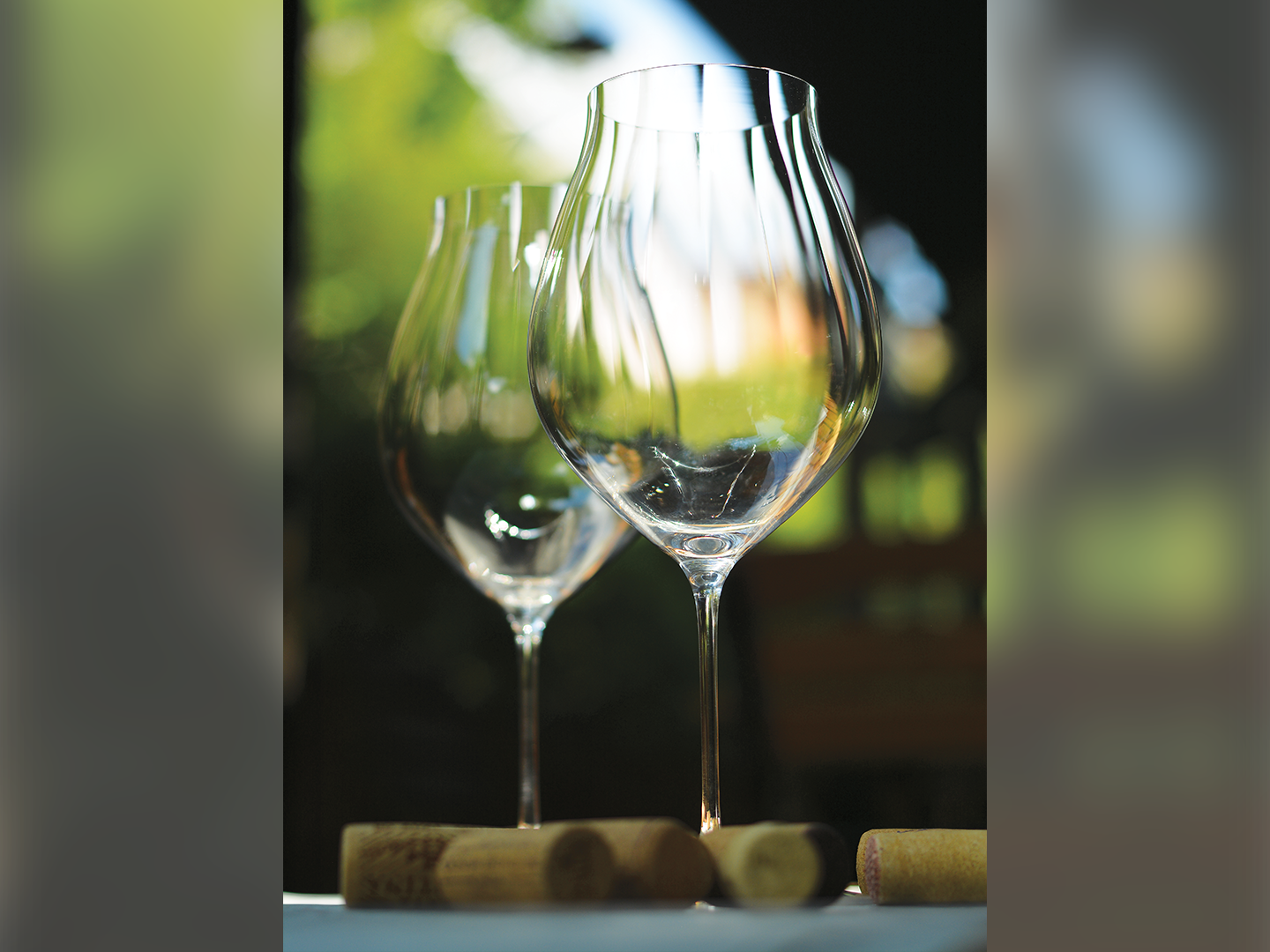
As the Armenian wine industry continues to ripen, the new government of Armenia is taking note. In February 2019, Prime Minister Nikol Pashinyan held a consultative meeting attended by representatives of winemaking companies. The goal was to discuss the opportunities and prospects of industry development in Armenia. The prime minister remarked, “Today, winemaking is one of the fastest growing industries in our country and the fact that such a significant presence is ensured already speaks volumes.”
Today, winemaking is one of the fastest growing industries in our country and the fact that such a significant presence is ensured already speaks volumes.
Vahe Keushguerian of WineWorks believes the wine business is in Armenia to stay. While other industries, like diamond cutting or tech, may be outsourced to countries where labor is cheap, winemaking cannot be outsourced. He explains, “Whatever we’re doing, this will stay with us forever. First, because no one has soil like ours. Secondly, you cannot outsource winemaking because it’s not a brain product. It’s a soil product, and it will stay for a very long time.”
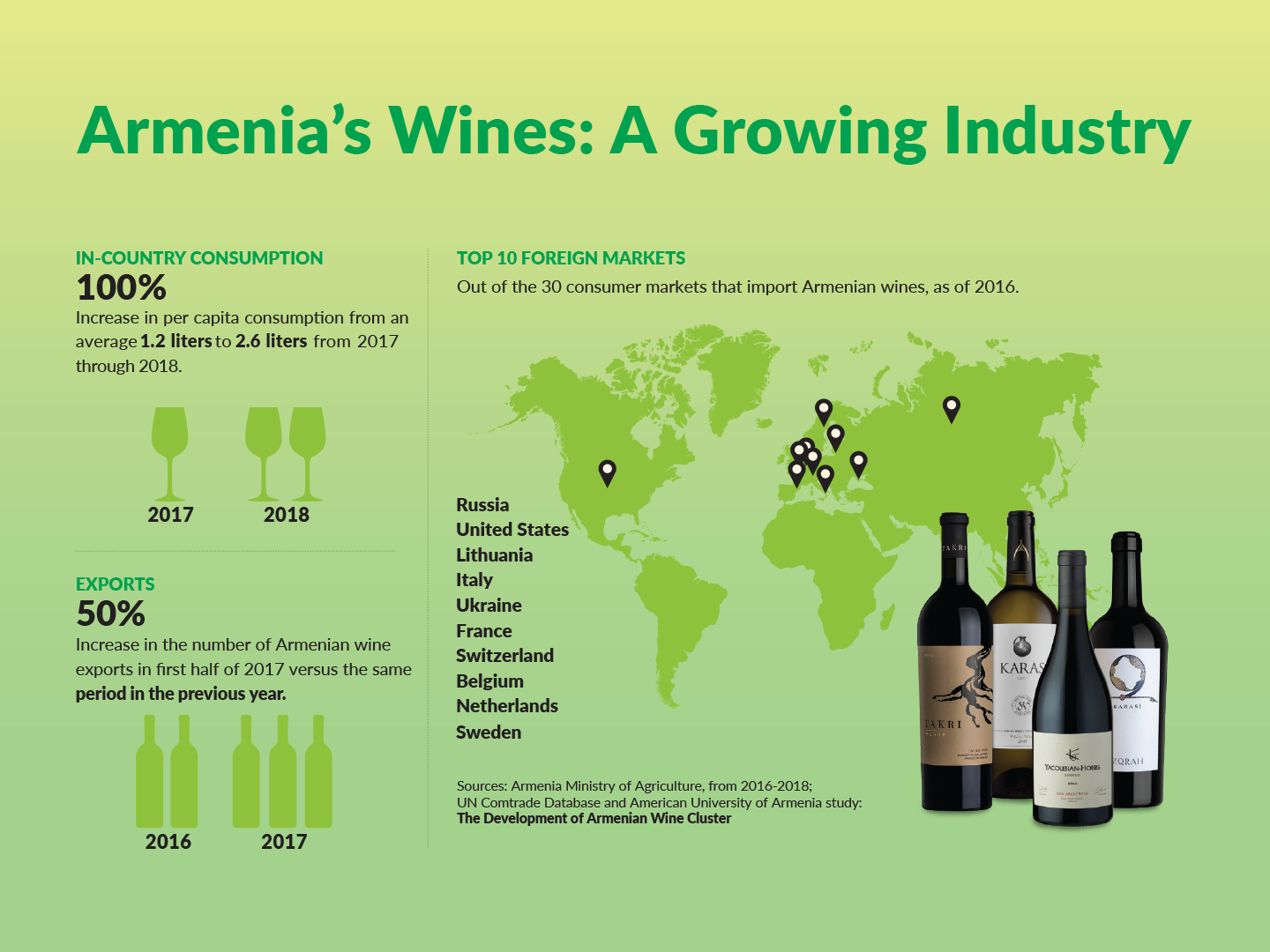
Nature’s Gifts to Armenia
The trifecta of earth, air, and altitude
Many of the early pioneers of Arm-enia’s wine renaissance, such as Eduardo Eurnekian, Zorik Gharibian, and Vahe Keushgeurian, as well as Swiss winemaker Jakob Schuler and American wine legend Paul Hobbs, were fascinated that such a small, landlocked country like Armenia was abundantly endowed with indigenous grape varietals unique to its highlands. The high-altitude vineyards and volcanic and limestone soils were ideally suited for growing high-quality grapes for winemaking. With the perfect terroir and indigenous grapes, previously unknown to even the best winemakers in the world, Armenia could carve out an unrivaled niche for itself in the wine world. Gharibian, the founder of Zorah Wines, explains, “Internationally we have no competitors, simply because we are too niche. Armenia doesn’t belong to any category yet, and, as the Italians say, we are a ‘mosca bianca’—a ‘white fly,’ a rarity. ”
Such excess of natural riches extends across eight of the 10 regions of Armenia: Armavir; Ararat; Aragatsotn; Vayots Dzor; Tavush; Syunik; Kotayk; and Lori.
According to the wine industry report published by the American University of Armenia (AUA), most of the vineyards in Armenia are situated between 850 and 1,400 m altitude and some are more than 1,700 m high. Due to the altitude of the vineyards, there is a high-temperature range during the maturation process, which allows for thicker and better berry skins. This is one of the advantages Armenia enjoys and may leverage as a winemaking country.
The other advantage is the wealth of the indigenous grape varietals. Areni is known for red and Voskehat for white wines. Haghtanak, meaning “victory,” and Kakhet, are other promising red wine varietals, while Kangoun, meaning “standing,” is the variety known for making white wines. According to Keushguerian of WineWorks, there are hundreds of indigenous grape varietals
in Armenia, of which only about 30 are used in winemaking. The most notable autochthones are Areni, Kakhet, Voskehat, Khatun Kharji, Movuz, Sireni, and Chilar, widely used in Armenian wines. International grape varieties, such as Merlot, Malbec, Syrah, Tannat, Chardonnay, Viognier, Muscat, and Cabernet Franc, are also grown and used in Armenian wines. Some regional grapes, like Saperavi and Rkatsiteli, are cultivated in Armenia and used by Armenian winemakers as well.
The Grapevine Strategy
Word of mouth goes a long way to put Armenian wine on the world map
Armenians everywhere have a vital role to play in boosting Armenia’s wine industry as a driver of economic growth. Whether you’re a wine connoisseur or just rooting for the home team, it’s easy to serve as an Armenian Wine Ambassador. Here are some easy ways you can help raise the profile of Armenian Wines and treat your own palate to the subtle flavors of your ancestral roots.
Order Armenian wine online. Several online distributors can ship almost anywhere in the world. The higher the demand, the sooner global distributors will catch on.
Request Armenian wine at retailers you frequent. Some stores will put in a special order for you, with a case or more. Mention some specific labels for them to investigate. (See wine list on opposite page).
Ask your server or sommelier at fine restaurants and lounges. If they don’t carry Armenian wines, suggest labels to the house. For BYOB situations, introduce Armenian labels to your dining partners.
Start a wine trivia conversation. Break the ice at a party or happy hour by mentioning that Armenia has the oldest winery on Earth, boasts the ideal soil and climate, and grows a disproportionate variety of indigenous grapes for the size of its land, winning awards and top reviews from world-class wine experts.
Visit the vineyards. When in Armenia, take a wine tour and sample wines. Carry back the two-bottle limit allowable for cross-border travel. Some Armenian wineries can also arrange for larger overseas shipments right to your door, depending on size of order.
Review your favorite Armenian wines online. Share your experience on social media and wine blogs, along with photos of labels.
Serve Armenian wine for special occasions. And, if you’re organizing a local community event, serve Armenian wines and set up a tasting table with literature provided by the winemakers.
Gift Armenian wines to your hosts. Armenian wine is always an opportunity to introduce the uninitiated to the wider Armenian story.
Check Armenia’s Indigenous Grapes by Region
Check Armenian Wine List here.
Banner photo by Alexei Fateev/Alamy

